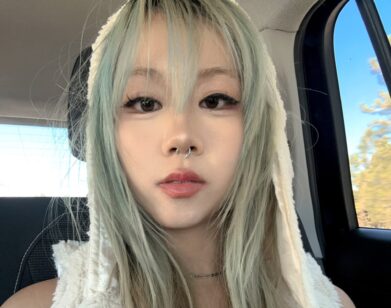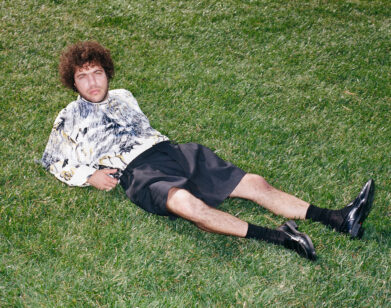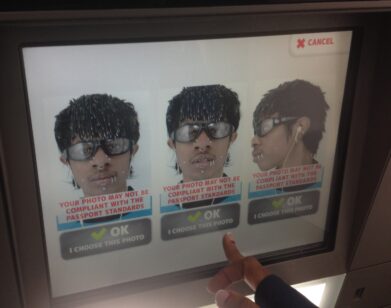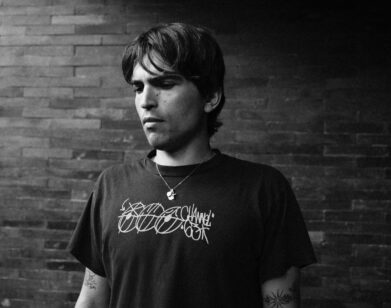Discovery: Heyerdahl
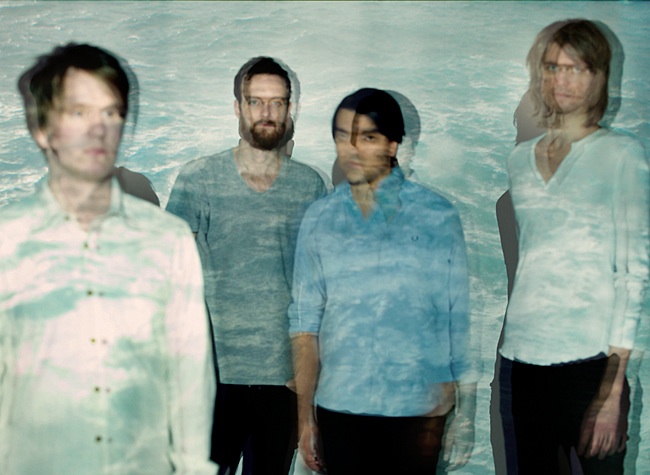
ABOVE: HEYERDAHL
Last August at Oslo’s Øya Festival, Heyerdahl performed live for the first time. Less than a year old, the band had come a long way to grace the tented-side stage.
Named for a 20th-century explorer, Heyerdahl is a rare band determined to deliver on their adventurous mandate. Musically, that meant stepping outside of previous comfort zones, blending the styles of four very different musicians to create a twisted blend of electro-rock that alternately swings between ethereal and dark. Physically, it took the Oslo-based band out of the city and into a lighthouse on the West Coast of Norway. There, against the backdrop of a harsh Scandinavian winter and near-record hurricane conditions, the group recorded their debut album, Øen.
We joined frontman Kenneth Ishak for a conversation about Heyerdahl’s evolution from rum-drinking tropicália players to modern-day music adventurers. The band also provided us with the debut of their new track “Beast,” which you can stream below.

MEMBERS: Kenneth Ishak, Tore Løchstøer Hauge, Magne Mostue, Mattis With
HOMETOWN: Oslo, Norway
ON NAMING THEMSELVES AFTER A NORWEGIAN EXPLORER: We just decided on his name because of his character. They made this movie about him now. When that started out we were like, “Ugh, should we change our name?” Now it just got nominated for an Oscar. I haven’t even seen the movie. I haven’t refreshed my knowledge of Heyerdahl since we took that name.
ASSEMBLING THE TEAM: We met because I have my studio and I produce bands and artists. My friend Tore, he wanted to record a solo record and couldn’t afford it. [laughs] I said, “Well, I want to play drums in something, because I haven’t played drums in a while. Maybe we can make it a project and do it when I have time.” Then he invited two of his friends. They didn’t know each other. Everyone just knew Tore.
It wasn’t like we sat down and talked about what we wanted to make. There’s so much music, and everyone has a studio at home. There’s so much good music—it’s very overwhelming. So we were like, “If we’re going to make something, let’s make something that’s different.” If you experience the music, you’ll experience something else. There will be a backstory. Everything grew from there.
STRIKING OUT FOR ADVENTURE: Since I work in the studio, if I’m going to be doing something with a project where I’m going to be the artist, it’s hard to be inspired. I need to go away and have other surroundings to inspire both me and the band. There’s a 7-11 right next to the studio. Every time we rehearse, someone has a pizza slice in his hand. We wanted to do something different.
In the beginning, we were playing Caribbean beats, dub, and reggae-type stuff. We were in our underwear, drinking rum and Coke and playing around with different rhythms and bass lines. We wanted to go to the Pacific and record on an island somewhere and just use the equipment that they would have on this island. And maybe even have local musicians play with us. [laughs] And then people started having children. This meant that we couldn’t travel that far. We found this huge villa in Provence, France, with a huge swimming pool and everything. But the bassist suddenly had twins, and he couldn’t go away. I spoke with Tore on the phone and it was like, “What are we going to do?” I said, “Humm… find a lighthouse.” And he did! He said, “We can rent this place,” and I said, “Okay, sure!”
This was in a part of the country that I really like because you can go surfing there in the winter. I’ve done that a few times. You’ll be surfing while it’s snowing and it’s really beautiful. It’s not cold, because you have a wetsuit. It’s amazing. So I knew the area and how beautiful it was. You don’t really have any cell phone reception. So we just cut away. It’s like going back in time. There’s just a few houses. You have to travel by car for a half an hour just to get supplies.
BLOWIN’ IN THE WIND: The evening before we were going to leave, we were going to have an engineer with us to set up all the equipment and be the engineer. On the evening news, there was footage from the lighthouse saying there was a hurricane and the highest winds were recorded at the lighthouse. His family, they wouldn’t let him go. So he called me and said, “They’re not going to let me go. It’s going to be dangerous, and also, how are you going to record something during a hurricane? You’re just going to have wind on all the tracks. I said, “Yeah, that’s what’s going to happen, and it’s going to be cool!” Driving up to the lighthouse in the hurricane, in the night, was really scary. That was really, really scary. Everyone was scared. There was a narrow road, and if we would have slid off it would have been 100 meters down to the ocean. This was in March, so it was snowy and crazy.
TAPPING INTO THE PAST: When I was 19, I would write music about whatever I would say while singing in my bedroom. It was about some girl or something. We just had these themes that we wanted to write about, and created this little universe that was easy to build on.
The first song on the record is a true story that was told to me when I was way north on this little island. There was this guy who was driving me around and telling me local stories. He even drove me to the local witch to hang out with. We drove past this little bay. There were these empty houses. I asked him about this beautiful little empty village. It’s Widow Bay. He mentioned some year—I don’t remember the year—where everyone were fisherman who went out to sea and just disappeared. That was something that I told the other guys in the band when we were at the lighthouse, and that became the lyrics. It’s written from the perspective of a boy. He’s young, he’s not really sure what’s happening, he’s at the window.
ON THEIR NEXT DARING ALBUM: We’ve been talking about going further north. We might not actually record the actual album. We might go on a trip. It might be impossible to record, but possible to write, and possible to interview people and do research and bring all that back, and go through all the ideas and the research. It might be just be bringing a microphone and interviewing people, and getting stories from their grandparents. We have been talking about different things. I’m not going to say exactly what. It’s going to be something that’s not going to be comfortable at all for us when we go there. It’s going to be cold.
HEYERDAHL’S DEBUT FULL-LENGTH, ØEN, WILL BE AVAILABLE JANUARY 28 VIA RED EYE TRANSIT. FOR MORE INFORMATION ON THE BAND, VISIT THIER FACEBOOK PAGE.

